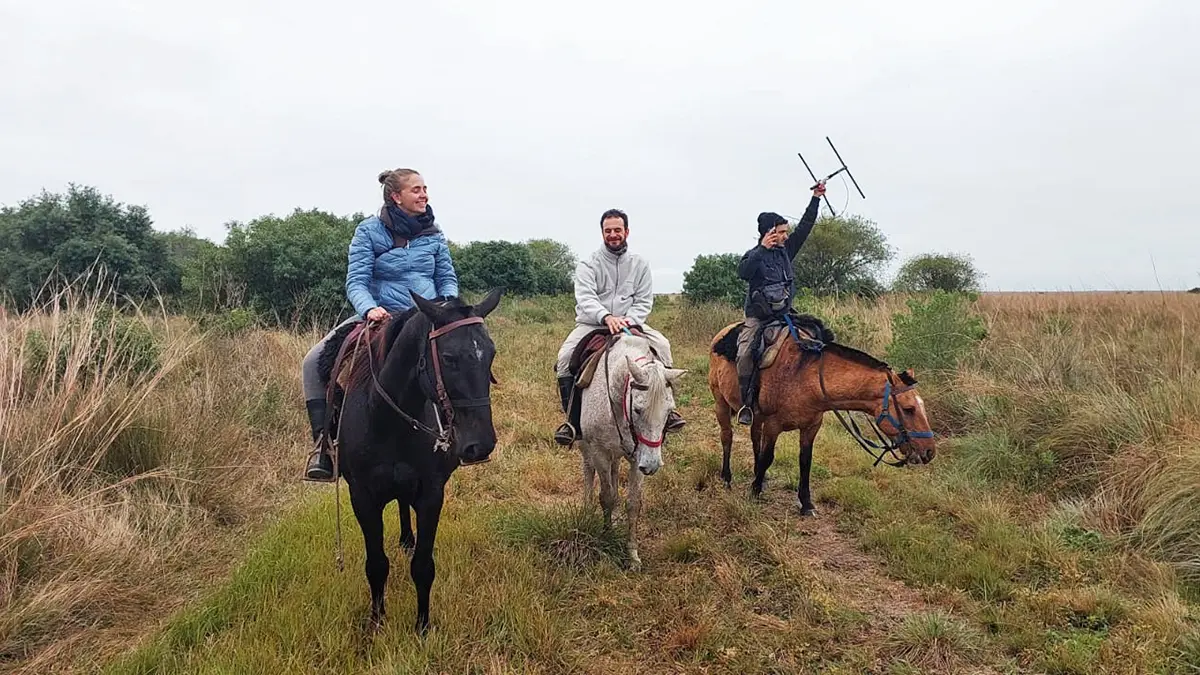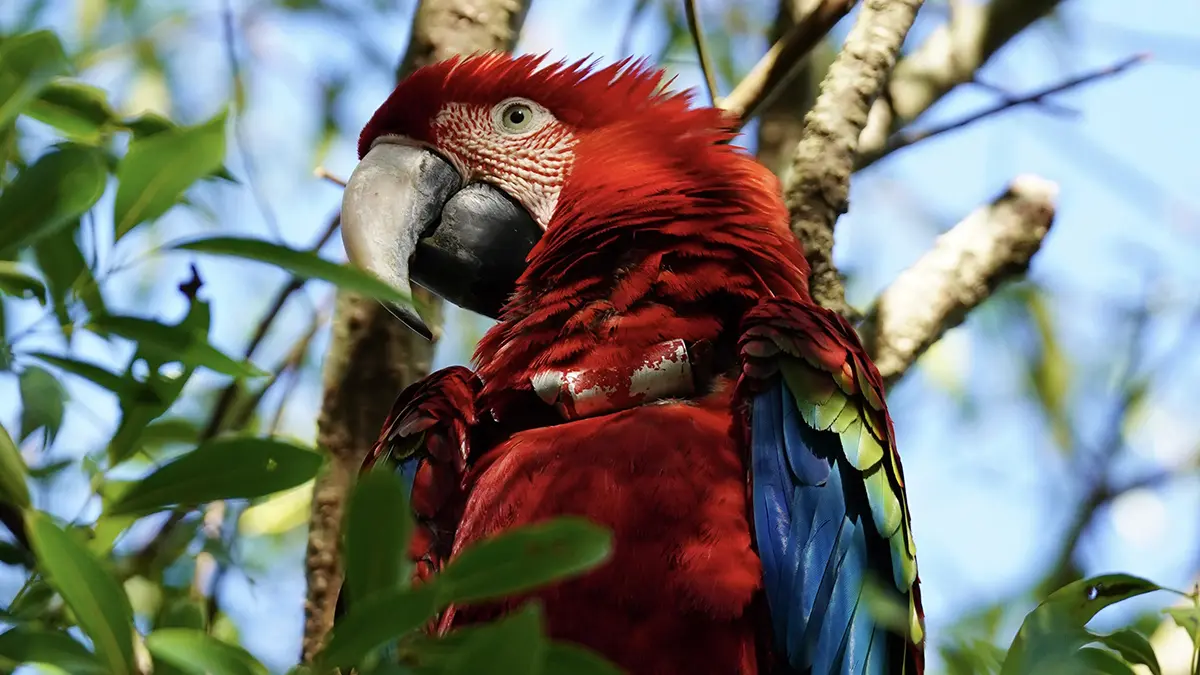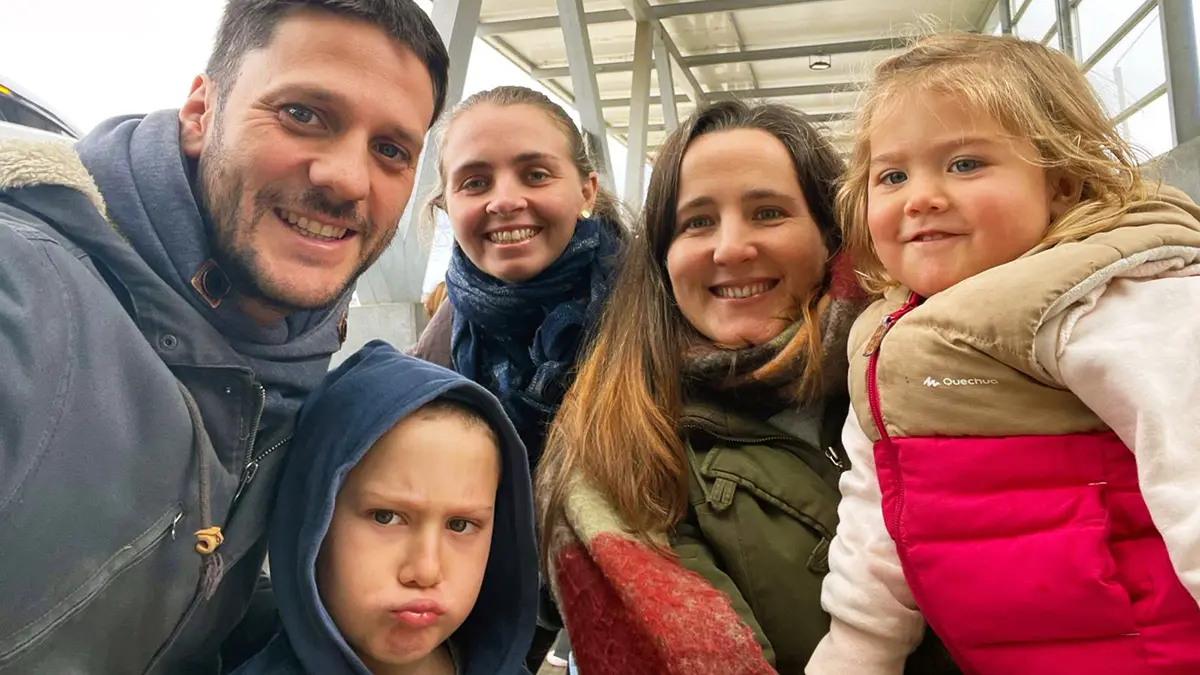Conservation Chronicles: Australia Meets South America
Half a world apart, Australian and South American conservationists are working on the same projects in vastly different ecosystems, but one goal unites us: ecosystem restoration and species conservation.
Estimated time to read: 12 minutes
Countries involved: Australia, Argentina, and Uruguay
Organizations involved: Australian Wildlife Conservancy, Fundación Rewilding Argentina, Asociación Ambá
Even though we knew only a few dozen phrases in Spanish (like amo los ornitorrincos! or I love platypus!), after meeting the Rewilding Argentina Team in Rwanda in 2024 and hearing about their work in South America, we (Aly and Issie from Australian Wildlife Conservancy) were eager to see their projects in action on the ground. So, with five Duolingo lessons under our belts and google translate saved to our front screens we were off to the other side of our Hemisphere.
Thus, on June 26th, 2025, Gerardo Cerón, a 2023 ECTI participant who volunteered in 2024 to repeat as an assistant (he seemed to like the course so much!!), picked us up in Corrientes City, northern Argentina. It had been almost exactly one year since we had seen each other in Rwanda, and it was unreal to be meeting again on an entirely different continent.

Gerardo, Aly, and Issie meeting in Corrientes after a year apart.
We were extremely lucky to have met Gerardo in Rwanda, as he is a) a top bloke, and b) able to get us the Rewilding Argentina “backstage passes”. Gerardo is probably much too busy and important to be playing tour guide for a pair of Aussies, which made it extra delightful to have his company and conversation as we found ourselves in a totally new environment with different species, habitats, and conservation projects. As he drove us from one place to another, Gerardo would casually point out animals that we had never even heard of. At one point he flippantly remarked “Oh that was an armadillo we just passed,” gesturing to a lump on the ground we had missed entirely.
Our first stop in our Argentinean tour was Estancia San Alonso in Iberá National Park, accessed by a boat guarded by a battalion of napping capybara. The capybaras in San Alonso, Gerardo explained, are much more highly-strung than other capybaras around Iberá park, as they now live inside the core area where jaguars have been reintroduced by Rewilding Argentina. The “highly strung” capybara let us sit with them and doze in the morning sun. We idly wondered what the hell a relaxed capybara would look like. Nearby, a sign informed us that we were not allowed to swim, dive, fish, burn, or camp, but mate (the traditional energizing infusion for Argentineans) was a-okay, aptly summarising the local priorities. We drank some bitter grass water and felt very local about it.

A “high-strung” capybara enjoying an Iberá sunrise. We came to realise that capybaras are Argentina’s version of the kangaroo: something so common the locals don’t even notice them anymore, but which we were overjoyed with no matter how many we saw.
Rewilding Argentina has been reintroducing locally extinct species in the region since 2007. As two conservationists working on the exact same mission half a world away in Australia, it’s hard to describe the kind of excitement we felt at arriving in a place working on restoring ecosystems like the one we were seeing. Reintroduced collared peccary greeted us on the shore as we arrived to San Alonso Island. Marsh deer grazed nearby oblivious to our presence. Pampas foxes roamed the edges of the grassland. We were like kids in a candy store, except instead of candy it was regionally rare and extinct species and instead of kids it was two grown women reaching octaves hitherto unheard of.
We met some of the RA team stationed on San Alonso. So many people, all in one place! Our teams are not quite as big in Australia, but we soon learned that the Argentinian ecologists are expected to have far more skills than their Aussie counterparts, including not only horse riding but horse wrangling, kayaking, fishing, animal husbandry, and whatever else the job might require. In repayment for all the things we were learning we could only offer some Tim Tams (an iconic Australian biscuit) that we had brought with us. In response, we were invited to tag along to watch the captive jaguars being fed. We calmly and graciously (i.e., rapidly and enthusiastically) accepted.
You are never so acutely aware of the fragility of your own skeleton as when you meet a live jaguar for the first time. The human skull can withstand about 200 pounds of pressure per square inch (PSI) before cracking. Jaguars have a bite force exceeding 15,000 PSI, allowing them to crush tortoise shells and, presumably, the heads of whatever idiot humans get in their way. Perhaps this is why it’s the volunteers who were sent in to feed the jaguars. The team were bemused by our hesitance. After all, jaguar attacks are extremely rare. (Thanks, but we’ll stay on our side of the fence regardless.)
One of the biggest native mammal predators in Australia, the quoll, is about the size of a house cat, and though it has the ferocity and sharp teeth of a top-order predator, you never find yourself contemplating mortality while working with them. Meeting the San Alonso jaguars, therefore, was a wildly unique experience. Rewilding Argentina has already released a number of jaguars into the wild (there are close to 40 free-ranging individuals living in an area where they were extinct less than 10 years ago), and we were lucky enough to meet Malú and Carataí, two of the jaguars still in captivity as part of the breeding program. The first thing Malú did when we approached was throw herself at the fence and snarl at us. When we asked the ecologist if this was okay he almost looked puzzled. “Oh, that? That’s basically her playing. If she actually wanted to hurt you, you would know.” Fantastic.

Malú on the prowl for feeding time, keeping Issie and Aly on their toes.
Even more exciting than meeting jaguars (if that’s even possible!) was meeting San Alonso’s giant otters. The day after our departure was the day five otters were scheduled to be released into the wild, where a breeding population hasn’t been seen in 40 years. We met the family as they made short work of the fish caught earlier that day. This was another difference to the Australian rewilding programs we’re used to at home: our animals are rarely bred on site for release but are instead either sourced from other wild populations or are bred by zoos. There are clear benefits to both strategies, but it was obvious that the Argentinian method meant the ecologists felt connected to their charges, a sense of responsibility that seemed deeper for having worked with the species—sometimes even with the exact individuals—for months or years prior to release.
It soon became apparent that cars and quad bikes would not be adequate to get around the project area, as the native habitat is marshy, with grasses sometimes over head height. How, then, do you radio-track jaguars and other reintroduced animals like giant anteaters across their vast home ranges? We were thrilled to discover that in Argentina jaguar tracking on horseback was sometimes the best option.

Radio-tracking jaguars in San Alonso. We tried to convince our Argentinian friends that we do the same thing in Australia but with kangaroos instead of horses. Cross-cultural information exchange for the win!
Unbeknown to us, our intrepid ECTI leader Ignacio Jiménez had organised a South American ECTI and, by astonishing coincidence, was in Corrientes at the same time as us. We had the wonderful opportunity not only to catch up with Ignacio but also Jorge, Marisi, and our South American conservation colleagues from last year’s course in Rwanda. We were able to join the team for a tour of Carambolita (another sector of Iberá Park), as well as dinner and our first taste of pisco, the traditional liquor from Peru. The air among the participants in the South American course was collaborative and friendly. We learned another important phrase: “y si!” meaning “of course,” or “obviously,” and not, as we had misinterpreted, people saying Issie’s name at the start of every sentence.

From left to right: Jorge, Gerardo, Marisi, Issie, Ignacio, and Aly.
We were treated to some delicious homecooked Gerardo-certified meals and got our first taste of alfajores, the local and extra sweet biscuits. Although we were both getting more accustomed to mate, anything with dulce de leche (caramel) was a favourite.
In a Corrientes carpark the Aussie handover occurred, and we said goodbye to Gerardo and hello to another fellow ECTI participant from the Rwanda course, Mane Masat, who ferried us to Portal Yerbalito, where red-and-green macaws, curassows, and giant anteaters have been reintroduced. Mane and her team share a house in the north of Iberá, where they can live in the same environment as the species they work to reestablish.

Mane, Aly, Gerardo, and Issie en route to Yerbalito.
We worked closely with Coti, Gonza, Mari, and Pablo (Mane’s assistants) to check on sick macaws, put food out for the wild populations, and radio-track some of the reintroduced anteaters. Again, we were impressed and delighted by the relationship the ecologists had with their ecosystem and the species within it. We were also interested to see the use of WhatsApp as a tool for data collection and storage. In Australia it is not an uncommon communication app, but we left Argentina with a newfound appreciation for different ways to utilise it during radio-tracking and surveys.

One of the collared Macaws, in the wild now after being raised in the captive breeding program.
Australia often gets touted as the country with the most bizarre creatures, but we both agreed that giant anteaters blow the humble platypus out of the water. The first time we saw one lumbering out of the trees after an hour spent tracking it down, we almost didn’t believe what we were seeing. That tail! That head! That nose! Those fists! Absolutely incredible to have the opportunity to not only see one in the wild but be a part of the conservation story.

A giant anteater recently reintroduced at Yerbalito in Iberá. His radio-tracker is attached with a backpack to ensure it doesn’t slip over his head.
It was finally time to part ways, but the story wasn’t over yet. We both spent some time with other projects; Issie with Maximiliano Costa (another 2024 ECTI Rwanda friend) and the Ambá Association in the neighbouring country of Uruguay. Aly departed in the opposite direction to meet Débora Abregú (a recent South American 2025 ECTI graduate) in El Impenetrable National Park, sited in the Chaco region of Argentina, part of South America’s largest tropical dry forest. It was truly wonderful how easily and quickly we were welcomed into teams half a world away from our own project areas, and we were both so grateful for the lengths that everyone went to, ensuring we got to experience as much as possible while we were on site.
In Impenetrable, Aly radio-tracked red-footed tortoises, helped to set up a trap for the oldest jaguar in Argentina, met the giant otters, helped the crew with invasive donkeys, and went bird watching through the unique and beautiful forest. At night, the team played music on the guitar and keyboard and sang for hours. As with the other teams we had met so far, it was obvious that in Argentina, your work colleagues are also akin to family. It was humbling to be allowed to be a part of that family, even if only for a short time.
In Uruguay, Issie saw firsthand that most of the native wildlife that still survives in surrounding countries has been lost, including the jaguar, giant anteater, marsh deer and collared peccary. Species like the maned wolf, pumas, and Muñoa’s Pampas cat have also severely declined due to threats similar to Australia; livestock grazing, agriculture, deforestation and afforestation with foreign species like eucalyptus—it became a running joke that next time Issie visited she would bring some koalas from Australia to complete the Uruguayan eucalyptus forest. Thanks to Ambá, a non-profit organisation looking to regenerate these ecosystems and restore the emotional bond of human beings with nature, Uruguay may see native species back in its landscape again. Issie spent the first few days with Maxi and his family staying in their incredible timber home in the sierras outside Rocha. During this time Issie got to see some of the projects Ambá are working on in eastern Uruguay, including joining a walk at Sierras de Rocha with Mariana Pirez, the project’s Coordinator. The last, final and arguably the most important stop after a great few days with Maxi and his family, was to visit the ice cream shop to indulge in the locals favourite dulce de leche flavoured ice cream.

From left to right: Maxi, Amaru, Issie, Tami, and Runa.
Issie then met with Talía Zamboni, Ambá’s Ecological Restoration Coordinator. Talía and Issie had crossed paths several years ago when Talía had worked with AWC across some of AWC’s wildlife sanctuaries, so it was great to reconnect. Joined by Wilson Ferreira, who has been working with Ambá to assist fundraising, they travelled west across Uruguay to visit some Ambá’s projects on the Rio Uruguay. The organisation has been engaging here with the local community through kayaking, working to build more of a connection between the people and nature. So, after a delayed start due to heavy rain and cold weather (which featured lots of trips to the local Russian restaurant, a story for another time), they jumped into the Ambá kayaks and got on the water to explore some of the area they’re protecting and surveying for wildlife.
It was so fantastic for Issie to connect with Maxi, his family and Ambá and great to continue their conservation conversations sparked all the way back in Rwanda.
Ending:
Half a world apart but united by the same passion for nature, it was a privilege to spend time in Argentina and Uruguay with AMBA and Rewildling Argentina’s conservationists who, like us in Australia, are fighting to bring species back from the brink. From jaguars slinking through the wetlands to capybaras dozing in the sun, from giant otters reclaiming rivers to anteaters lumbering through grasslands, every encounter was a reminder of what’s at stake—and what can be restored. What struck us most wasn’t just the wildlife, but the people: ecologists who track jaguars on horseback, and share meals and music with the same passion they pour into rewilding. Across continents, cultures, and languages, the fight to heal ecosystems is the same—and unstoppable.
Text and photos by Issie Connell and Aly Ross
Design: Andrés Stubelt

Giant otter. Photo: Shutterstock
